This is a mushroom not so common here.
You will often see it elsewhere on the elder tree.
This year I was lucky to find it on two different spots.
Jelly ear or Auricularia auricula-judae, is fairly easy to recognize due to its mat gelatinous appearance, with its ear-shaped, its color, deep wrinkles and small whitish bloom that can be seen very well on pictures.
It is a curious fungus which blackens during droughts and then resumes its original appearance when there is sufficient moisture.
This is an edible mushroom, but in moderation and not repeatedly if you want to avoid syndrome or purpura of Szechwan or Sichuan, or "Chinese Restaurant Syndrome".
Indeed, you'll understand that this is a fungus widely used in traditional Chinese cooking, also in their pharmacopoeia, and even if you're not a mushroom collector, you may already consumed it (or fungi from the same family) if you have already tasted this cuisine. Usually it is called black fungus from Asia.
This is still an interesting fungus to study in its way to colonize some dead trees.
You will often see it elsewhere on the elder tree.
This year I was lucky to find it on two different spots.
Jelly ear or Auricularia auricula-judae, is fairly easy to recognize due to its mat gelatinous appearance, with its ear-shaped, its color, deep wrinkles and small whitish bloom that can be seen very well on pictures.
| Typical Jelly ear |
| Typical Jelly ear. |
It is a curious fungus which blackens during droughts and then resumes its original appearance when there is sufficient moisture.
| Jelly ear during wet periods. |
| Jelly ear during dry periods. |
This is an edible mushroom, but in moderation and not repeatedly if you want to avoid syndrome or purpura of Szechwan or Sichuan, or "Chinese Restaurant Syndrome".
Indeed, you'll understand that this is a fungus widely used in traditional Chinese cooking, also in their pharmacopoeia, and even if you're not a mushroom collector, you may already consumed it (or fungi from the same family) if you have already tasted this cuisine. Usually it is called black fungus from Asia.
| Jelly ear - Auricularia auricula-judae. |
This is still an interesting fungus to study in its way to colonize some dead trees.
| Colonization of a dead tree by the Jelly ears. |
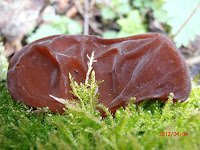
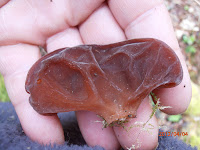
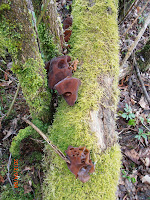
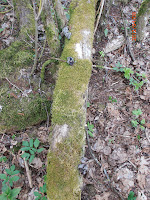
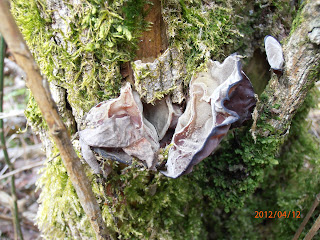
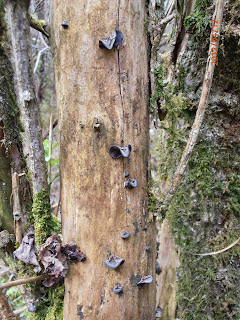
No comments:
Post a Comment
Thank you for participating !